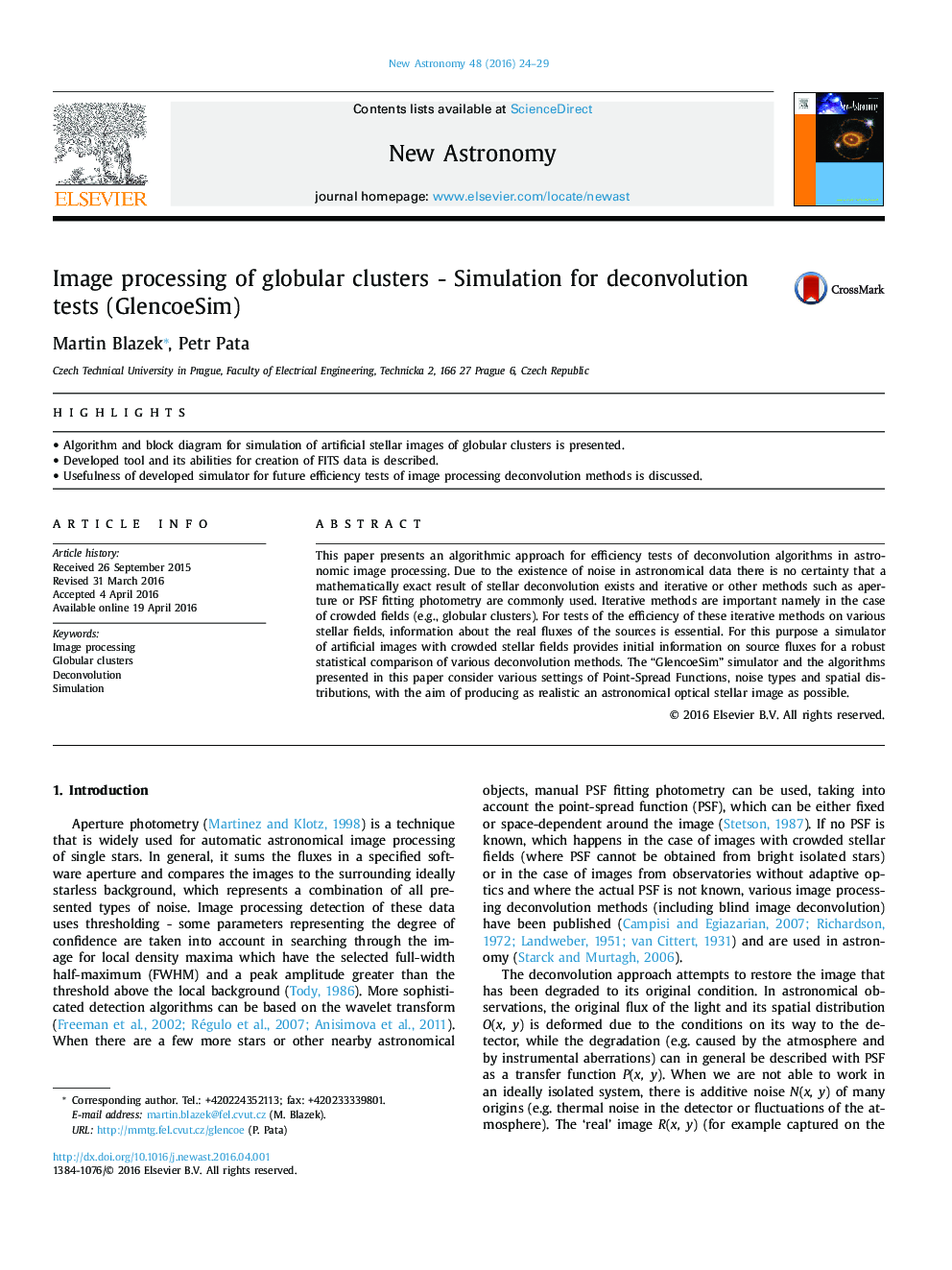| Article ID | Journal | Published Year | Pages | File Type |
|---|---|---|---|---|
| 1778708 | New Astronomy | 2016 | 6 Pages |
Abstract
This paper presents an algorithmic approach for efficiency tests of deconvolution algorithms in astronomic image processing. Due to the existence of noise in astronomical data there is no certainty that a mathematically exact result of stellar deconvolution exists and iterative or other methods such as aperture or PSF fitting photometry are commonly used. Iterative methods are important namely in the case of crowded fields (e.g., globular clusters). For tests of the efficiency of these iterative methods on various stellar fields, information about the real fluxes of the sources is essential. For this purpose a simulator of artificial images with crowded stellar fields provides initial information on source fluxes for a robust statistical comparison of various deconvolution methods. The “GlencoeSim” simulator and the algorithms presented in this paper consider various settings of Point-Spread Functions, noise types and spatial distributions, with the aim of producing as realistic an astronomical optical stellar image as possible.
Related Topics
Physical Sciences and Engineering
Physics and Astronomy
Astronomy and Astrophysics
Authors
Martin Blazek, Petr Pata,
